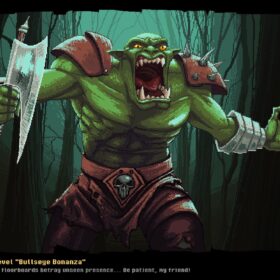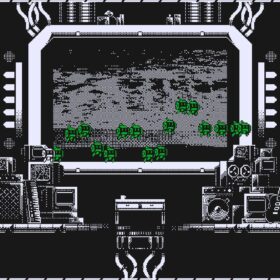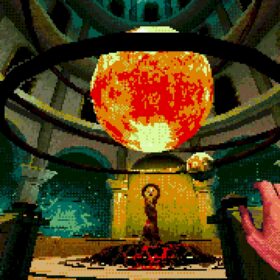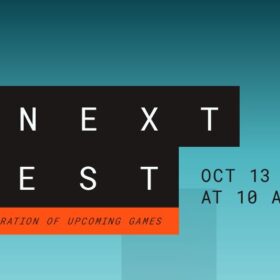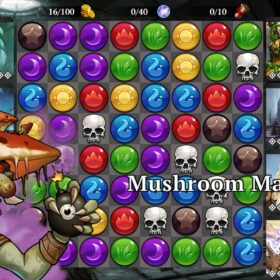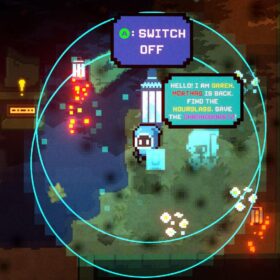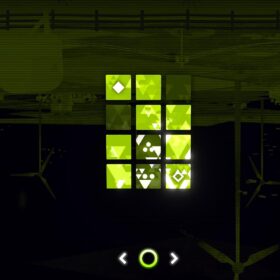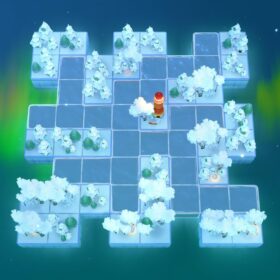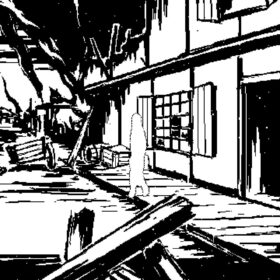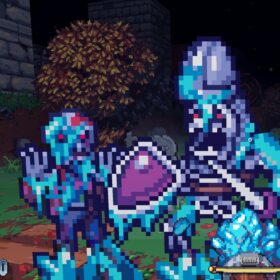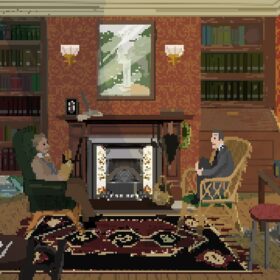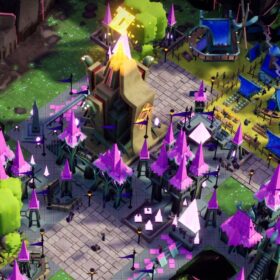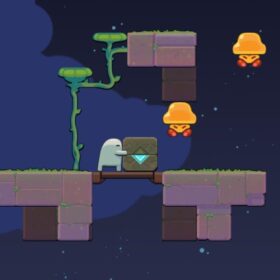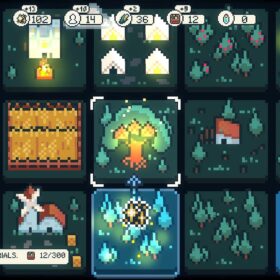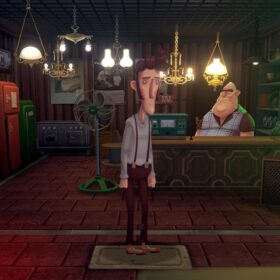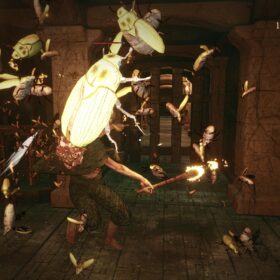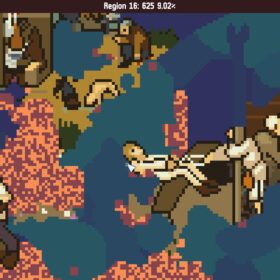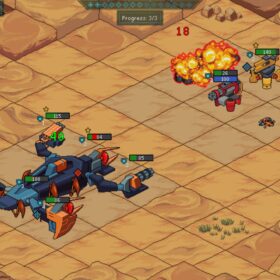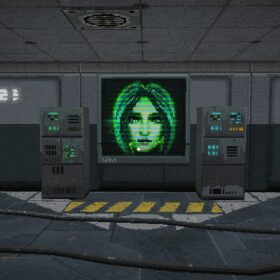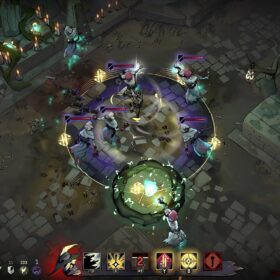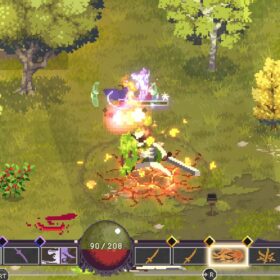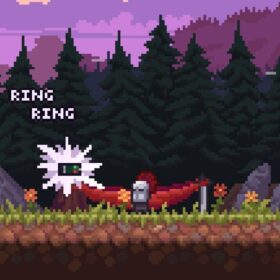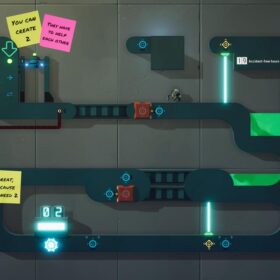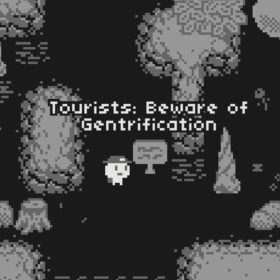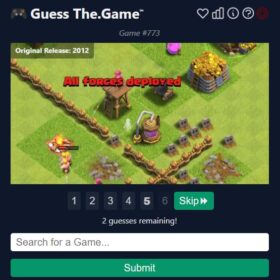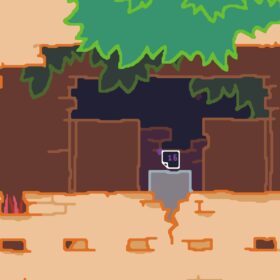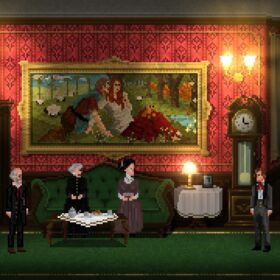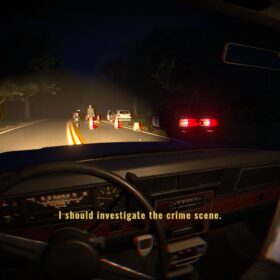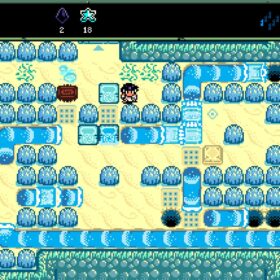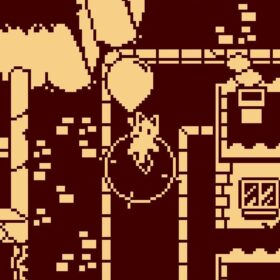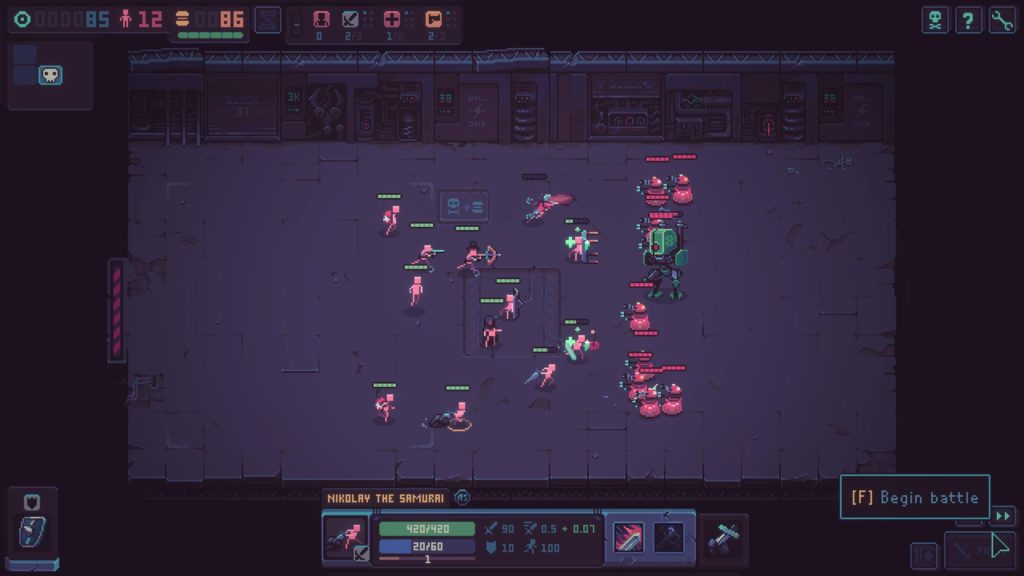
PC, Mac, Linux
There is unquestionably a secret fruit machine that indie developers use when deciding on their next game. You pull down the arm (it’s retro like that, because, indie developers), and the three dials spin around before settling on three genre types to combine. In the case of Despot’s Game, it ker-chunked to Roguelite, Pixel Graphics and Tactical. And I’m very glad it did.
(To be fair, two of the dials on the fruit machine they all use are mostly “Roguelite” and “Pixel Graphics”.)
Normally “tactical” is a result I steer away from, given what a bumbling buffoon I am, barely responsible enough to go to the shops on my own, let alone control the actions of dozens of units in elaborate battle. However, in Despot’s Game, such matters are simplified to a point where this feels legitimately arcadey, to match the look and feel of the rest of the game.
You begin with four puny humans, tasked with battling through randomly generated dungeons of discreet rooms. You can arrange their starting positions in a grid on the left side of every room, and then you hit “Fight”. After that, you sit back and watch as they launch their attacks against the revealed enemies. Should you win a battle, you can spend coins earned to buy new humans, new weapons and equipment to give to said humans, sometimes food, sometimes mutations, or even sacrifice one of your flesh-beings for food for the rest.
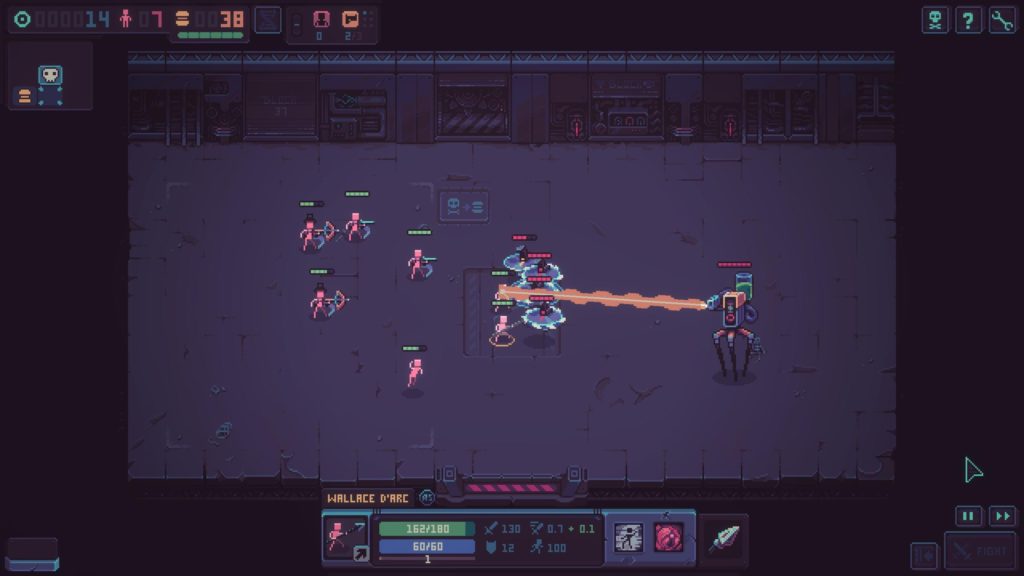
Then you encounter an enemy against which your poor folks don’t stand a chance, and it’s back to the start. But this time with an always-growing number of new advantages. Beyond this, it follows the roguelite dungeon-descending formula, only carrying out its battles in this wind-em-up strategic style.
Once a fight has started, you can’t intervene, which is both the game’s strength and weakness. I feel many will be frustrated by the hands-off approach, not being able to take action when things are falling apart. But then if you’re me, and I am, it makes it a super-streamlined way of presenting a fight, that otherwise might be two playing cards being put next to each other in a similar game.
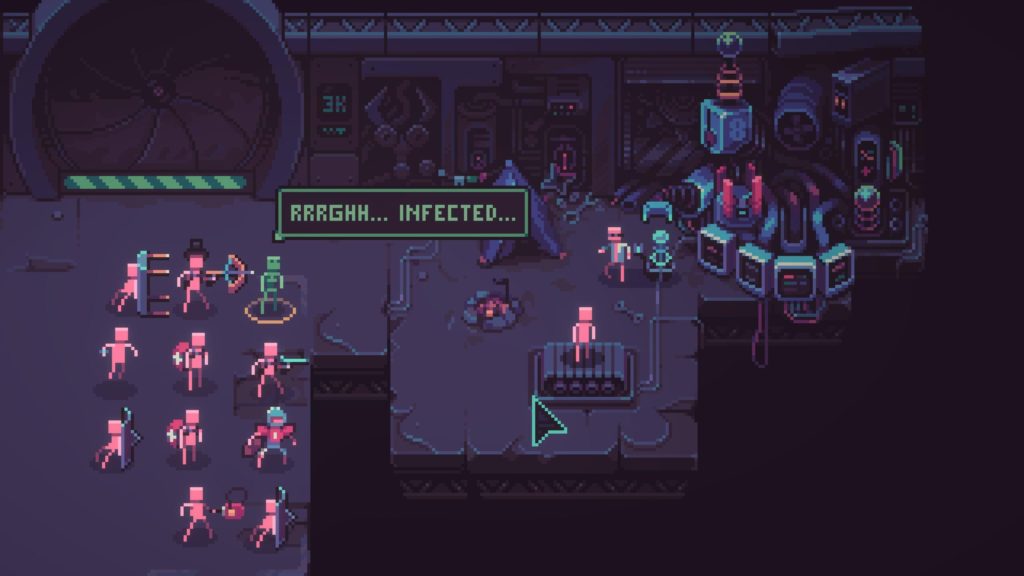
As you descend, there are text boxes that appear giving you multiple choice responses, often inscrutable as to their effects, which can either enhance or hinder your progress. All the while, you have to manage your food supplies – each human in your squad requires one piece of food each time you change locations. This has two clever effects on the game: it stops you from being able to aimlessly wander around, but rather pick a route; and it prevents you from making your army too large, as you’ll burn through food very quickly.
It’s worth noting this has just launched in Early Access, although it’s already essentially a finished game. Progress already unlocks a whole bunch of new game modes, and there’s an end-game in there already (not that I’ve reached it), that pits you against the final builds of other players! What a splendid idea.
There’s room for improvement, which will likely happen via player feedback. I’d love to see the game reminding me to spend coins on mutations, for instance, which is too easily forgotten. And it absolutely needs to improve its signalling of human deaths. Currently they very quietly expire, where it needs big, explosive deaths to make sure you’re noticing the losses as they occur. Plus, big explosive deaths are more fun.
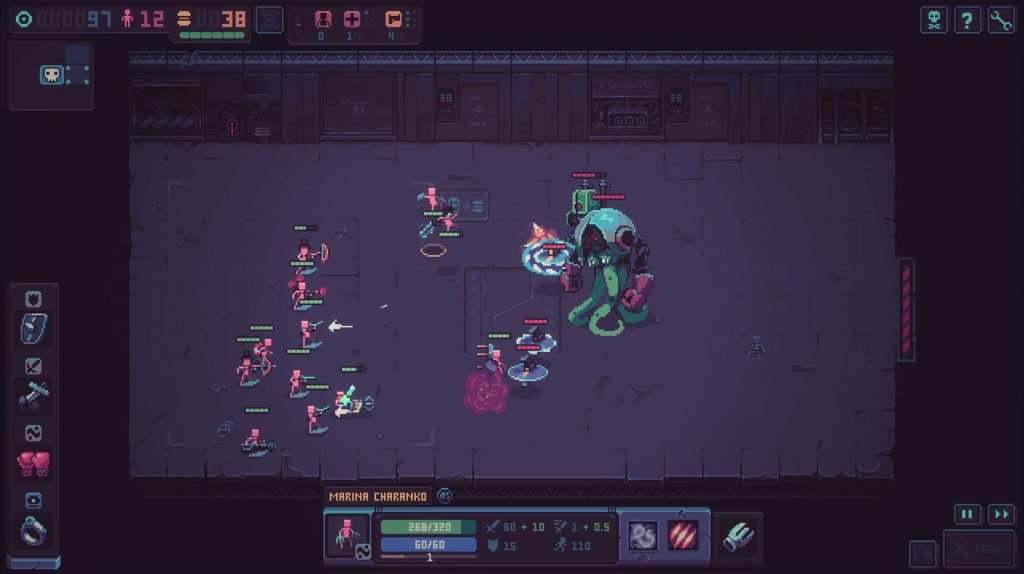
Really importantly, I’m enjoying the learning curve of Despot’s Game. It’s immediately engaging, but tough. Figuring out its systems, working out how the subtle tactical advantages of arranging your squad play out, is a long-term goal. And each run, I get deeper into the dungeon than the last. Which is what it’s all about.
- Konfa Games / tinyBuild
- Steam
- £11/€12/$15
- Official Site
All Buried Treasure articles are funded by Patreon backers. If you want to see more reviews of great indie games, please consider backing this project.



